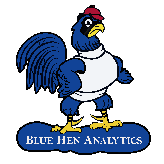Optimum Inventory Management is a technique used to determine the ideal quantity of inventory to order for a given product. The calculation uses advanced probability formulas to find an order quantity that minimizes both ordering and carrying costs. It aims to ensure a consistent stock while minimizing the risk of wasteful oversupply. The technique also defines the reorder point, which is the optimal time that the next order should be placed. Businesses use Inventory Management techniques to increase profitability as excess stock can result in unnecessary storage, administrative, financing and insurance costs. It offers a cost-efficient approach to merchandise ordering and maintenance.
Who uses Inventory Management?
The Supply Chain Management Industry uses Inventory Management techniques to lever profitability and cut unnecessary costs. The findings of this analysis help these companies maintain a streamlined and organized flow of goods based on tested numbers. Toy Distributors use Optimum Inventory Management to successfully maintain the right amount of product on hand to fulfill customer demands while also operating profitably. Manufacturers also use Optimum Inventory Management to determine the ideal quantity of products to produce. Manufacturers face similar risks to those of distributors and this analysis technique helps them plan their operations in an efficient manner.
As a small business owner of a local restaurant, you are interested in redesigning your menu to ‘freshen up things’. Is it wise to rely on your local food purveyor to determine how much you inventory you need to meet the customer demand? Before placing an order, one should feel overly confident that the incoming inventory is enough to meet the demand without having any excessive leftover stock before the next delivery. Having products sitting on the shelf that are necessary is like putting money into a savings account and getting nothing in return. Optimizing your inventory is a fiscally responsible way of managing your inventory without missing any sales and creating an overstock problem. While this example is focused on a restaurant, the same theory and practicality can be applied to almost any business.
Ways to use Demand Forecasting
Demand Forecasting is accomplished by one of three primary methods, or using a combination of methods to meet your business objectives. As each business is unique, there are generally common industry factors that will always play a role in the events effecting your business.
The key element for optimization is having the ability to meet the needs of your customers while meeting business objectives and goals. It’s often a fine line between having to much inventory and not having enough inventory.
It’s not effective to run out of inventory, nor is it effective to tie up to much capital in the inventory. There are many factors to consider when determining the optimum inventory. Events like seasonality, advertising campaigns, supplier lead times, and schedules must be considered, along with other market specific events.
Every product or service has a life cycle. The time needed to understand this cycle will allow one to better plan based on an on-going, ever-changing, cycle. Some items or services are heavily skewed by seasonality. Being able to offer the right product at the right time isn’t always an easy decision. The combination of the life cycle and seasonality typically plays a huge roll in the well-being of a business. For example, offering a service that is in high demand at a premium price may not be the most effective when the supply is also high. For planners, this isn’t very difficult to calculate. Once you mix in marketing to the equation, a new situation is presented that is more challenging.
